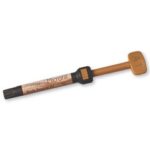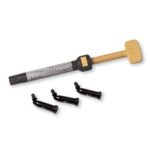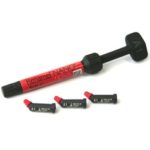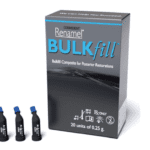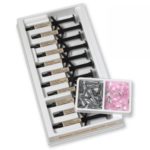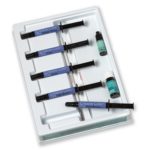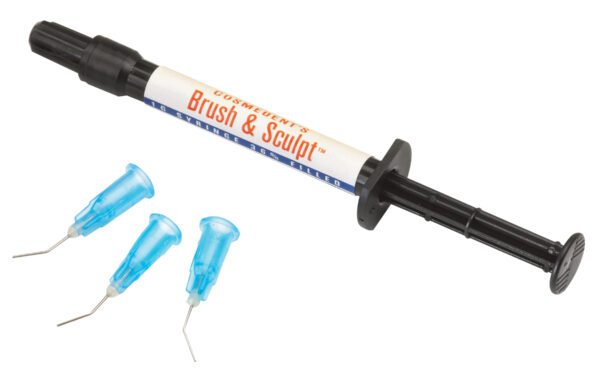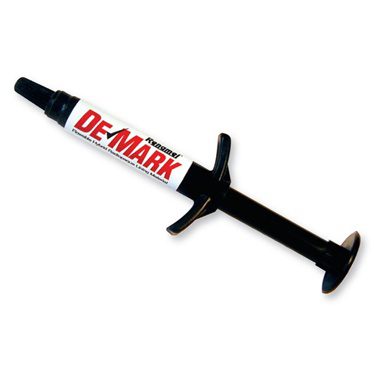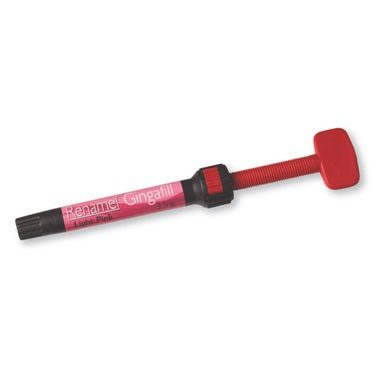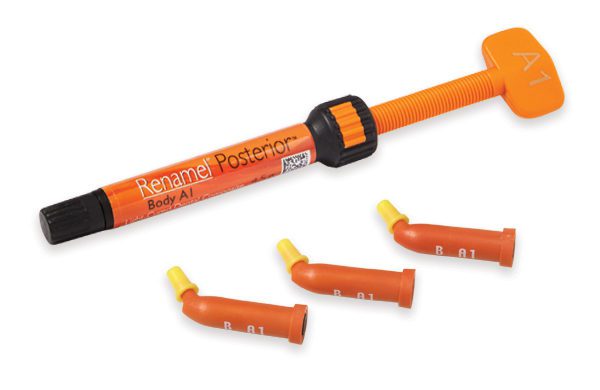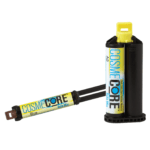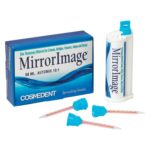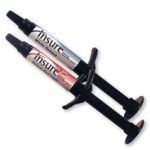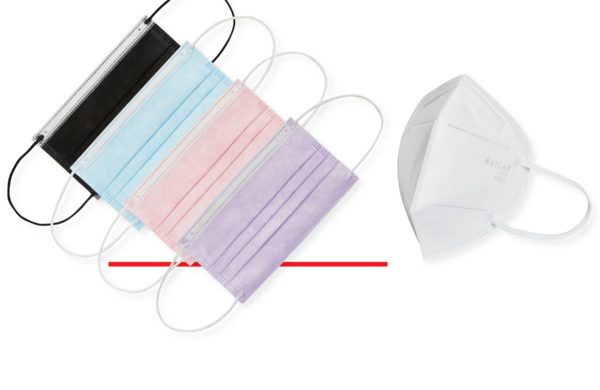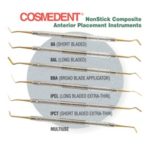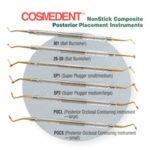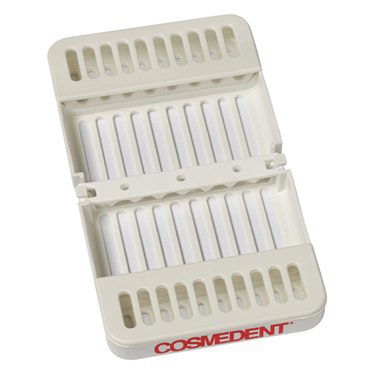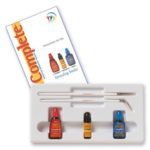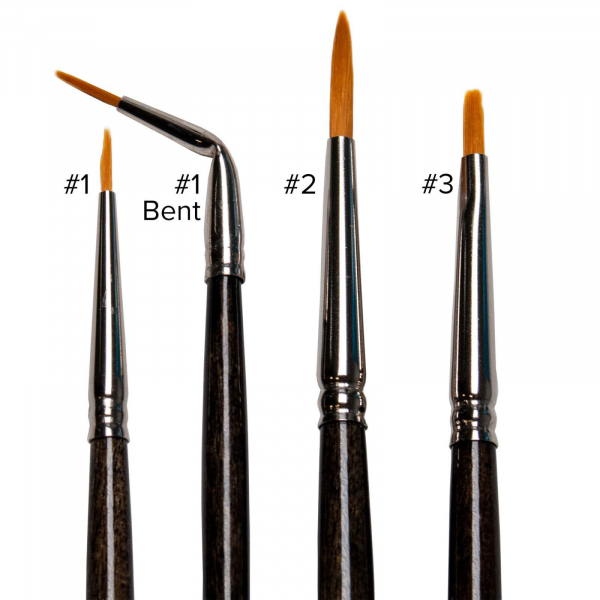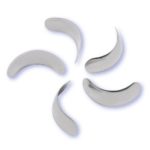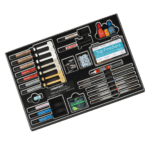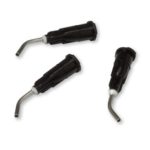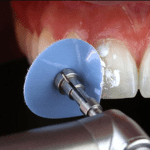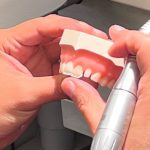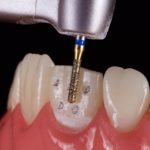Types of Dental Polishing Strips
There are two types of dental polishing strips. Each has its unique features and applications. Below is a breakdown of these instruments in detail:
FlexiDiamond Strips
The FlexiDiamond Strips are metal-backed diamond contouring and finishing strips that come in three grits: Coarse, Medium, and SuperFine and two widths: Regular and Narrow. The Coarse and Medium FlexiDiamond Strips bulk reduction (like IPR and orthodontic bracket removal). They can also be used to remove excess composite quickly interproximally. The Medium and SuperFine FlexiDiamond Strips are primarily used for contouring interproximally.
FlexiStrips
The FlexiStrips are mylar-backed aluminum oxide finishing and polishing strips that come in two types: Coarse/Medium and Fine/SuperFine, and two widths: Regular and Narrow. The Coarse/Medium FlexiStrips are ideal for shaping and contouring interproximally, offering versatility in achieving the desired tooth morphology. Use the Medium end of the Coarse/Medium and Fine/Superfine FlexiStrips to remove small scratches, pre-polish and polish composite restorations interproximally.
Use FlexiStrips for Hygiene appointments with Cosmedent Enamelize Polishing Paste. Place a small amount of enamel eyes in the proximal. Polish using the Fine end of the Fine/SuperFine FlexiStrip to remove any stains. Switch to the SuperFine end and finish to a high luster. This will remove interproximal stains during hygiene visits and restore composite restorations to a high luster, which helps prevent future plaque buildup.
Choosing the Right Type of Dental Polishing Strips
Selecting the appropriate polishing strip is crucial for achieving optimal results in various clinical scenarios.
Identify the Procedure
Assess the needs of the restoration. The aim is to find the ideal strip for each scenario. Here is your cheat code:
- Interproximal Reduction (Tooth Structure) – Choose the Coarse and Medium FlexiDiamond Strip
- For gross reduction of composite – use the Medium or Superfine FlexiDiamond Strip
- For interproximal contouring of composite – use the Medium end of the Course/Medium FlexiStrip
- For polishing interproximally – use the Fine/SuperFine FlexiStrip.
- To remove stains during hygiene – use the Fine/SuperFine FlexiStrips with Enamelize
Evaluate Material Removal Needs
The next thing you need to do is to determine the amount of material removal required.
- High material removal: Prioritize Rough Reduction Strips
- Moderate material removal: Consider Contouring Strips
- Minimal material removal: Use Tooth Polishing Strips
Consider Desired Finish
Another thing you must think about is the desired tooth surface finish.
Use FlexiStrips Fine/SuperFine for a smooth and glossy finish. Consider FlexiStrip Coarse/Medium to achieve refined contours. To ensure efficient material reduction, utilize FlexiDiamond Strips SuperFine or FlexiStrip Coarse/Medium.
Clinical Flexibility
You must also ensure clinical flexibility with versatile options. Having a variety of strips offers flexibility during different stages of treatment. Also, it allows adaptation to varying clinical needs.
Personal Preference and Experience
Apart from that, rely on your personal preference and clinical experience to make the best decision. Leveraging your experience enables you to make informed choices. You can also experiment with different types to find preferred choices.
Patient Communication
Lastly, discuss the procedure stages and choices with the patient. This enhances patient understanding. It also boosts patient satisfaction and confidence.
Applications of FlexiStrips Dental Polishing Strips
Let’s now discuss the ideal applications of FlexiStrips polishing strips:
Efficient Gross Reduction
FlexiDiamond Strips, Medium, and SuperFine are utilized for quick and efficient material removal during the initial stages of dental procedures. Their coarser grits contribute to effective rough reduction while maintaining control.
Precision Contouring
FlexiStrips, Coarse/Medium shape, are refined tooth contours to achieve the desired morphology. These aluminum oxide strips have medium grits that offer the versatility needed for precise contouring without excessive material removal.
Final Tooth Polishing
FlexiStrips, Fine/SuperFine play a crucial role in the final stages, providing a smooth and polished finish to the tooth surface. The fine grits ensure a glossy appearance without compromising the integrity of the tooth.
Interproximal Finishing
Use these instruments to achieve a high polish on interproximal surfaces. FlexiStrips effectively reduce the tenacity of interproximal stains and provide a smooth finish to the tooth structure.
Gingival Aspect Polishing
The Narrow FlexiStrips are also designed for polishing the gingival aspects of the interproximal area. Narrow FlexiStrips are excellent for this purpose because they minimize the risk of soft tissue damage.
Creating Defined Contours
They help in creating well-defined contours during dental procedures. Medium grits assist in precise contouring. This also ensures a balanced approach to shaping.
Best Practices for FlexiStrips Dental Polishing Strips
The effectiveness of these instruments depends on their application. The proper application guarantees optimal results. Embrace the following best practices for better safety and performance:
Select Appropriate Type
Start by choosing the strip type based on the specific procedure and the stage of treatment.
- To remove excess enamel during the preparation of the restoration, use FlexiDiamond Strips Coarse and Medium.
- If needed to remove large excesses of composite, use FlexiDiamond Strips, Medium, and SuperFine.
- To refine contours and pre-polish the interproximal, use FlexiStrips Coarse/Medium.
- For polishing the interproximal to a high luster, use the FlexiStrips Fine/SuperFine.
Adapt Grit Selection
Adapt the grit selection based on the required material removal and the desired level of smoothness. Gradually transition from coarser to finer grits for a refined finish.
Maintain Control
Maintain control over the strips during use to ensure precise and targeted material removal. Use a light touch and allow the strip’s abrasive properties to facilitate controlled procedures.
Proper Interproximal Placement
Gently insert the strip into the interproximal space. Remember to ensure proper alignment with the tooth surface.
Controlled Pressure
Apply controlled and consistent pressure during the polishing to avoid excessive force that may lead to damage.
Direction of Movement
Move the strip in a back-and-forth motion to ensure coverage of the entire interproximal surface.
Sequential Grit Progression
Start with coarser grits for initial reduction and progress to medium grits for contouring. Finish with fine and SuperFine grits for polishing.
Avoiding Tissue Damage
Exercise caution when polishing gingival aspects. Use narrow strips for precision and minimal tissue impact.
Regular Strip Inspection
Regularly inspect the strip for signs of wear. Always replace if the strip shows significant degradation.
Post-Polishing Evaluation
Evaluate the polished surface for smoothness and gloss. Ensure desired results before concluding the procedure.
Material Compatibility
Verify compatibility with the specific dental material being polished. Take your time to confirm the effectiveness in achieving the desired finish.
Efficient Removal of Stains
Identify interproximal stains for efficient removal. Do not use FlexiDiamond strips to remove stains. Combine Enamelize with FlexiStips Fine/SuperFine to remove the stains and repolish the composite.
Patient Comfort
Ensure patient comfort during strip placement. Don’t forget to communicate and address any discomfort promptly.
Optimal Strip Flexibility
Leverage the flexibility of FlexiStrips for effective adaptation. Above all, conform to tooth contours for precise polishing.
Grit Transition Strategy
Avoid abrupt transitions between grits for a seamless progression and consistent results.
Post-Polishing Assessment
Conduct a thorough visual and tactile assessment post-polishing. Then, verify the achievement of the desired finish.
Customization for Cases
Customize the selection of strips based on the unique requirements of each case. Adapt the technique to the specific procedure.
Continuous Learning
Stay informed about advancements in interproximal polishing techniques. You can do so by attending educational courses for continuous learning.
Environmental Considerations
Dispose of used strips responsibly and consider eco-friendly alternatives when possible.
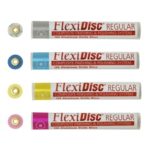 FlexiDisc Dental Polishing Discs
FlexiDisc Dental Polishing Discs Dental Polishing Cups, Burs & Points
Dental Polishing Cups, Burs & Points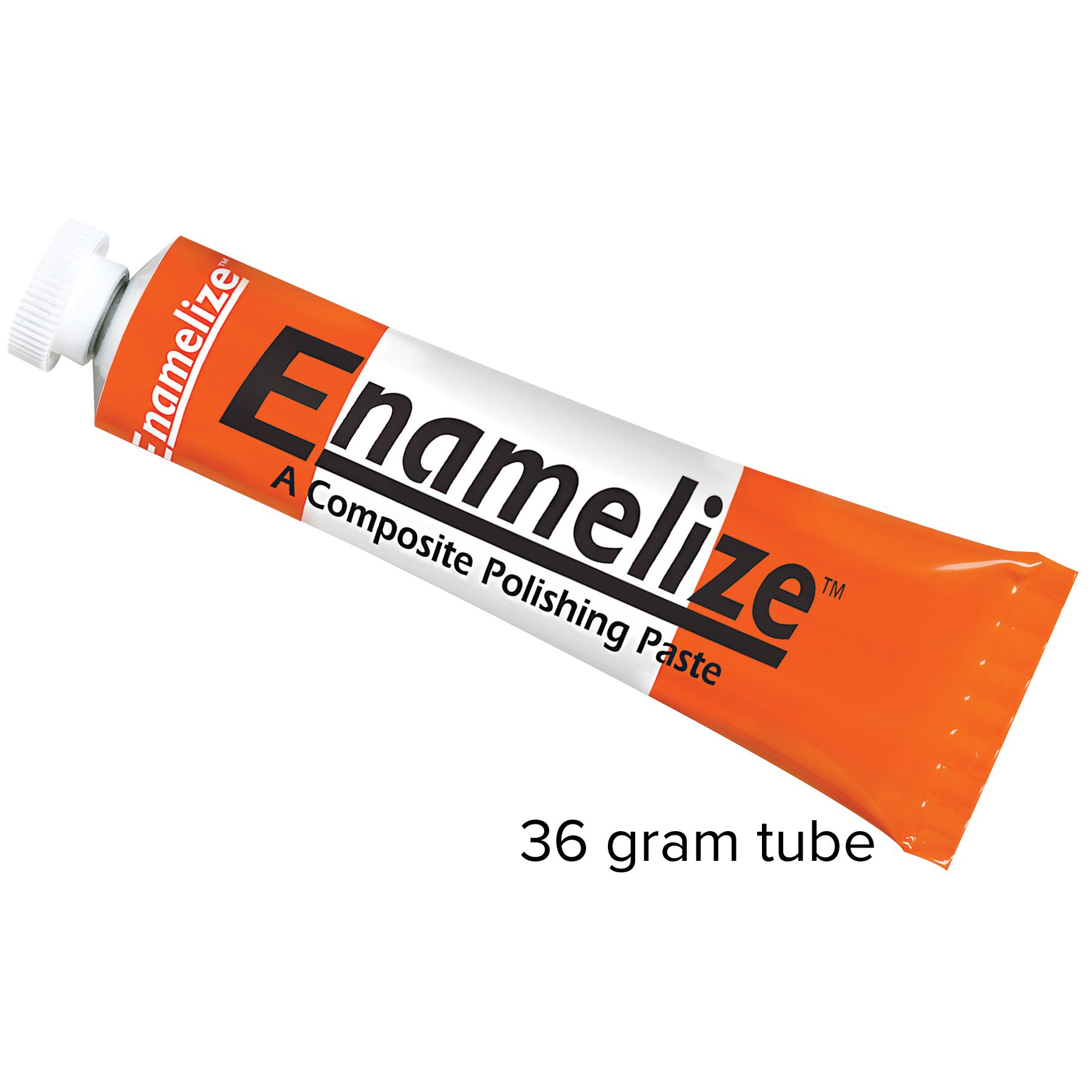 Enamelize Dental Polishing Paste
Enamelize Dental Polishing Paste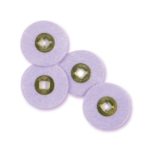 FlexiBuffs
FlexiBuffs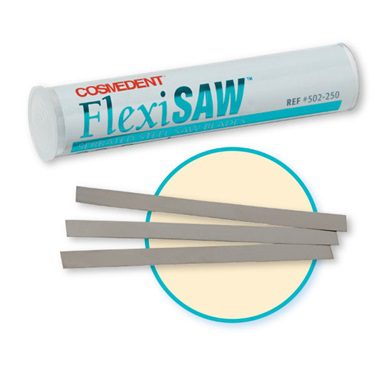 FlexiSAW
FlexiSAW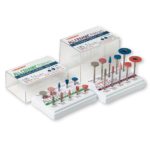 All Ceramic Polisher
All Ceramic Polisher FlexiStrips Dental Polishing Strips
FlexiStrips Dental Polishing Strips FlexiDiamond Strips
FlexiDiamond Strips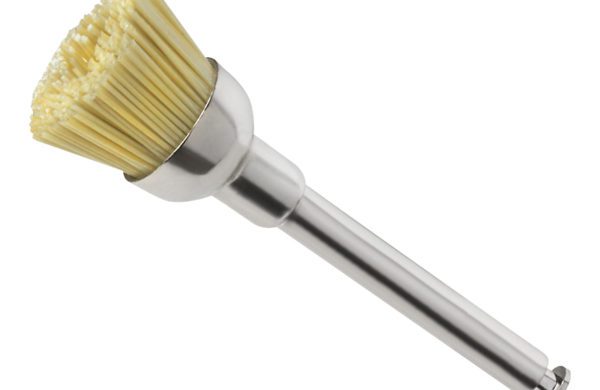 FlexiBrush Dental Polishing Brush
FlexiBrush Dental Polishing Brush NANO / Microhybrid Diamond Polishers
NANO / Microhybrid Diamond Polishers Porcelize - Porcelain Polishing & Finishing Paste
Porcelize - Porcelain Polishing & Finishing Paste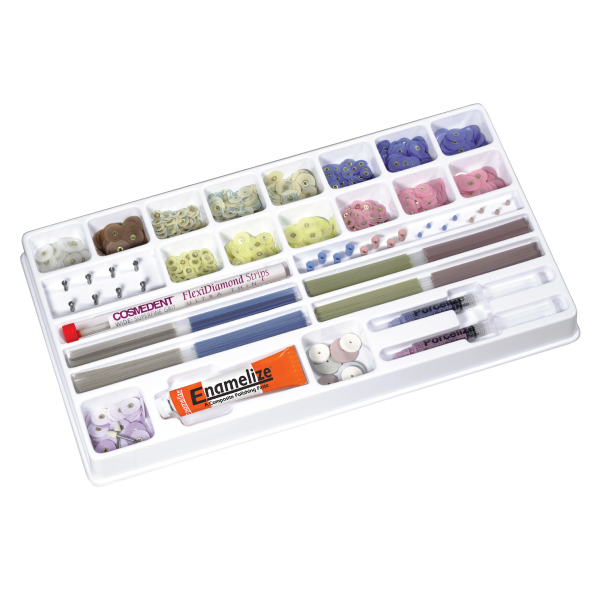 Top Finisher System
Top Finisher System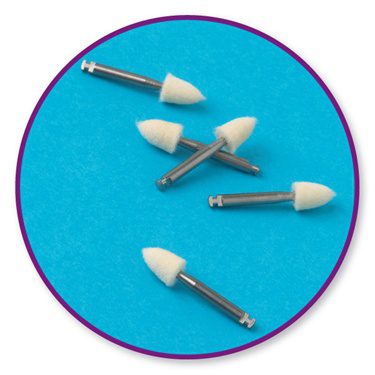 Felt FlexiPoints
Felt FlexiPoints